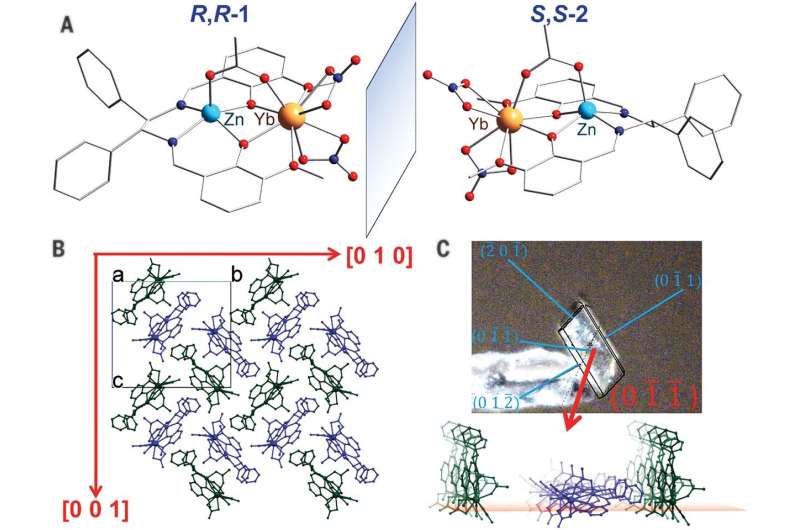February 7, 2020 report
Magnetoelectric coupling in a paramagnetic ferroelectric crystal demonstrated

An international team of researchers at University of Montpellier, University of Aveiro and University of Coimbra has demonstrated magnetoelectric coupling in a paramagnetic ferroelectric crystal. In their paper published in the journal Science, the group describes the ytterbium-based molecular magnetoelectric material they discovered and its possible uses. Ye Zhou and Su-Ting Han with Shenzhen University have published a Perspective piece describing the work in the same journal issue.
Over the past two decades, scientists have been struggling to produce multiferroic materials. But as Zhou and Han note, despite an enormous amount of effort, researchers have been unable to create such materials that can be used at room temperature. And there have also been problems creating materials with strong enough coupling to be useful in commercial products. In this new effort, the researchers have created a material that might have the characteristics that scientists have been looking for.
Ferroelectricity is a property of certain materials that have an electric polarization that can be reversed by an external electric field. If an electric field is applied to such materials, their dipoles align resulting in polarization. Ferromagnetism is the high susceptibility of certain materials to magnetization. And as in ferroelectrics, if a magnetic field is applied, the material's electron spins are aligned, resulting in magnetism. In this new effort, the researchers created a material with electrical properties that change when exposed to a magnetic field instead of an electrical force at room temperature. The new material also achieves six polarization states by manipulation of the applied electric and magnetic fields.
The researchers created the material by designing a chiral lanthanide complex in which the Yb3+ ion has a strong magnetic moment next to a ferroelectric chiral diamagnetic zinc center. The result is a magnetoelectric material based on a ytterbium molecule—one with high magnetoelectric coupling. The characteristics of the material were confirmed by taking measurements of the material with piezoresponse force microscopy while a direct-current magnetic field was applied.
The properties of the material suggest it may be competitive with inorganic magnetoelectrics. Zhou and Han suggest it could provide a new platform for the design of novel high-density memory devices
More information: Jérôme Long et al. Room temperature magnetoelectric coupling in a molecular ferroelectric ytterbium(III) complex, Science (2020). science.sciencemag.org/cgi/doi … 1126/science.aaz2795
Journal information: Science
© 2020 Science X Network



















